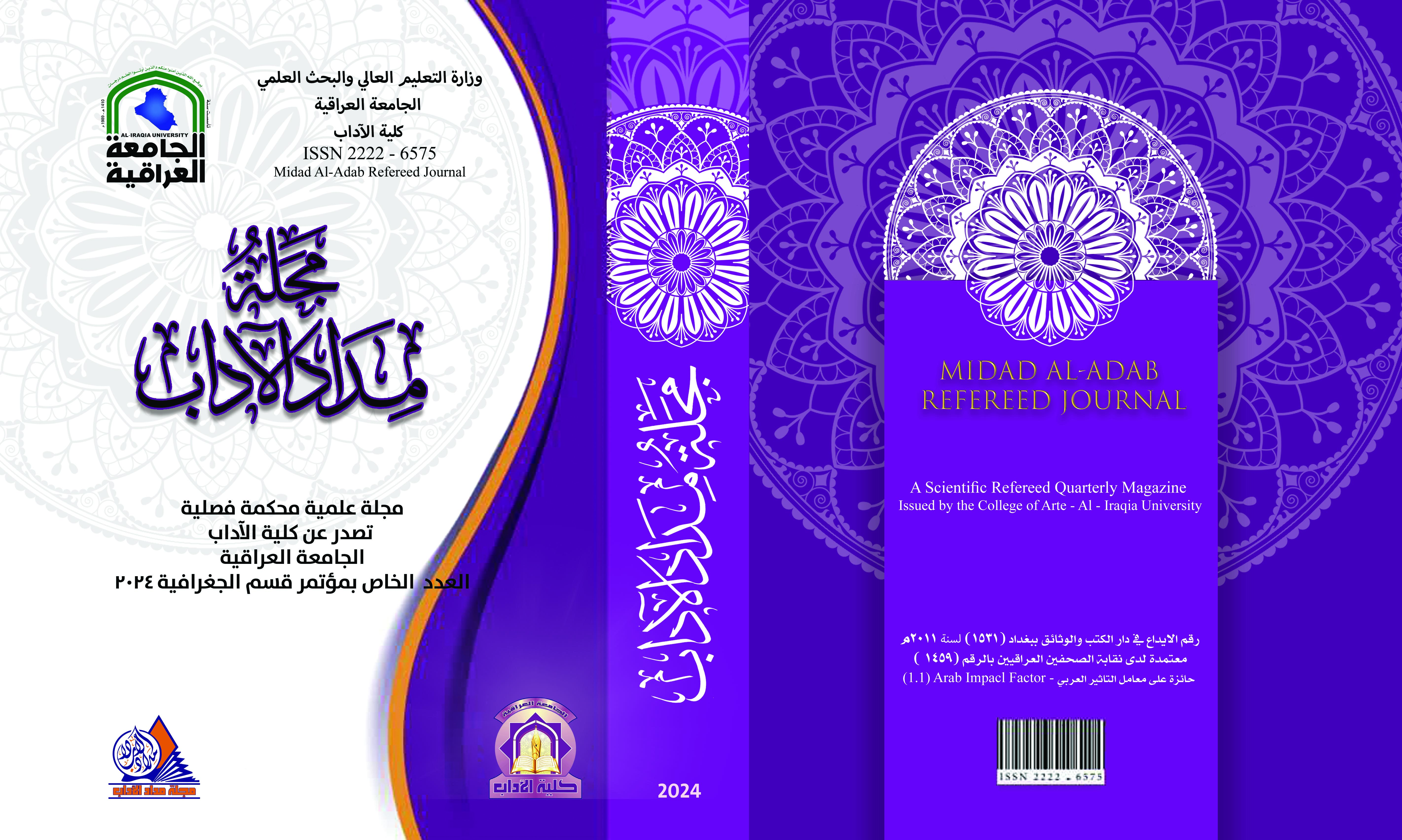Predicting land cover changes and their impact on water consumption of agricultural crops in Iraq using RS-GIS technology
DOI:
https://doi.org/10.58564/ma.v14iالعدد%20الخاص%20بمؤتمر%20قسم%20الجغرافية.1489Keywords:
key words:Land cover Water consumption, (LULC)، field crops، RS-GIS.Abstract
Water management and calculating water consumption for agricultural crops is one of the important requirements for any successful agricultural policy. The study included forecasting land cover changes and its impact on water consumption for agricultural (field) crops. This study was applied to each of the governorates (Ninawa، Anbar، Baghdad and Basra) and then Four climate stations were selected for it: (Mosul، Rutbah، Baghdad، and Basra) for the period from (1/1/2022 - 12/31/2022).
The study aims to detect the change in land cover based on land use land cover (LULC) maps derived from Sentinel-2 Land Cover Explorer for the period (2017-2018 and 2022-2023)، which is an increasingly important tool for decision makers for several sectors، and information The maps provided by these maps help guide policy and land management decisions، as the ArcGIS Living Atlas of the World website provides a detailed and accurate LULC land cover map، which is the result of a tripartite cooperation between Esri، Impact Observatory، and Microsoft، as well as calculating the water consumption of field crops in Iraq (wheat، barley، Rice، cotton) as strategic crops that the state relies on to meet the needs of its population for direct consumption or for industrial and agricultural purposes، through the use of statistical equations that calculate the percentage of water surplus and deficit in the study area to calculate water consumption and calculate field efficiency and net irrigation efficiency. The study also aims To understand how these covers will change by analyzing global land cover data and monitoring the change to the year 2050 based on Clark Labs، which designed these layers based on the same ESA Climate Change Initiative land cover for the years 2010 and 2018 that is already present in the Living Atlas (https:/ http://geoxc-apps2.bd.esri.com/LivingAtlas/GlobalLandCoverChangePrediction/index.html ).
The study revealed that there is a clear change in the land cover of field crops، with a clear decrease in the areas allocated to field crops as a result of the expanding drought area and the lack of water precipitation، in addition to encroachment and expansion at the expense of agricultural lands in the study area.
Downloads
Published
Issue
Section
License

This work is licensed under a Creative Commons Attribution-NonCommercial-NoDerivatives 4.0 International License.








